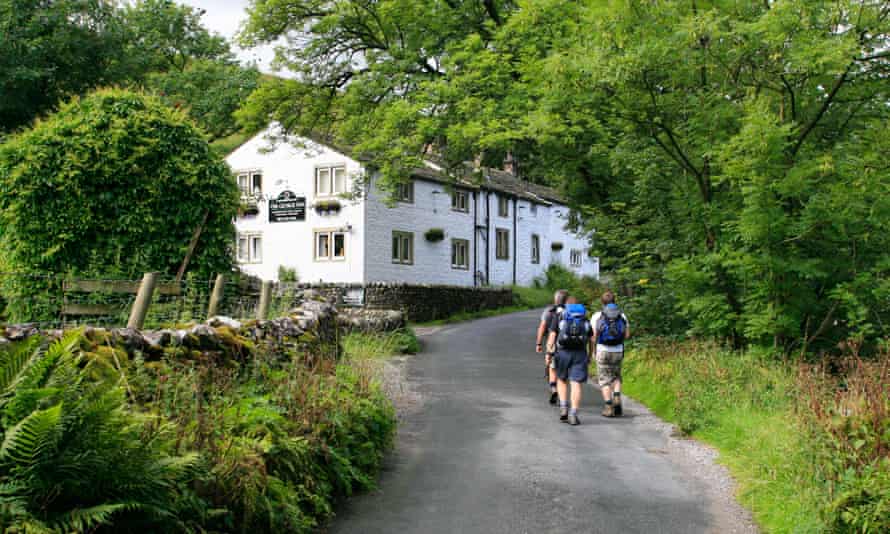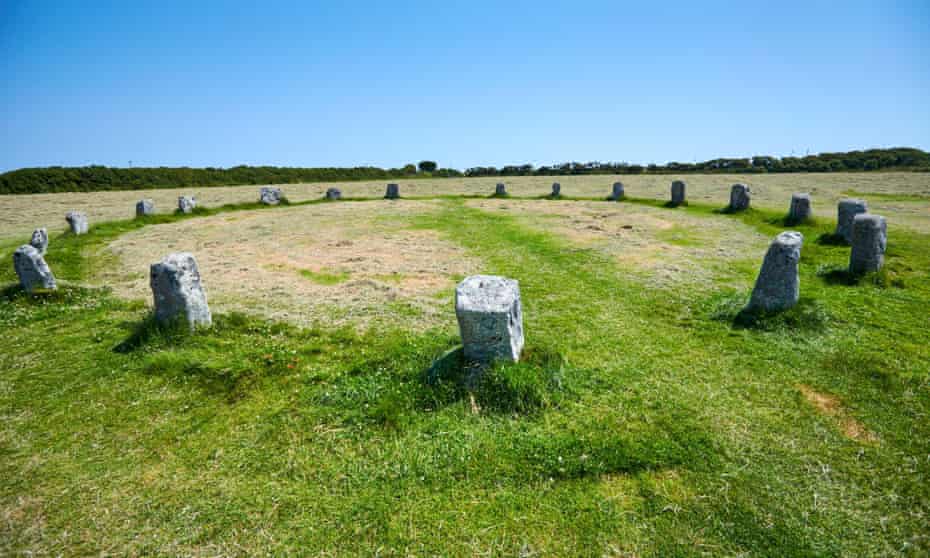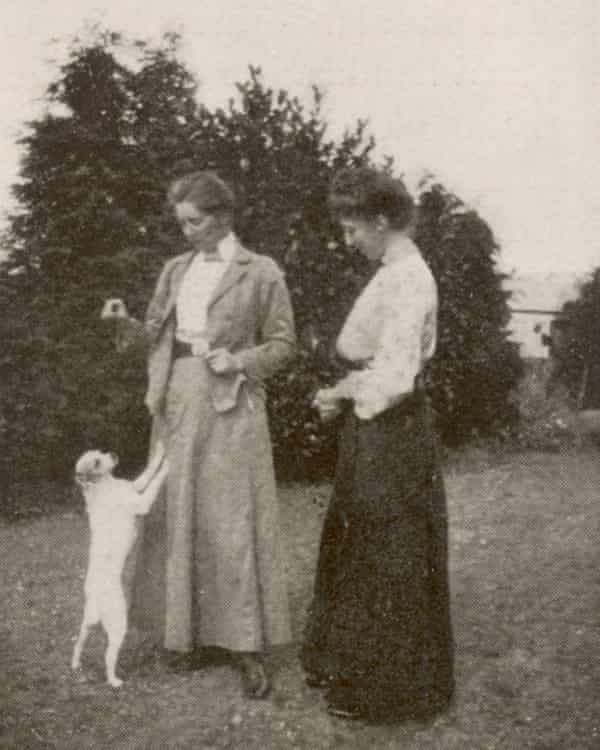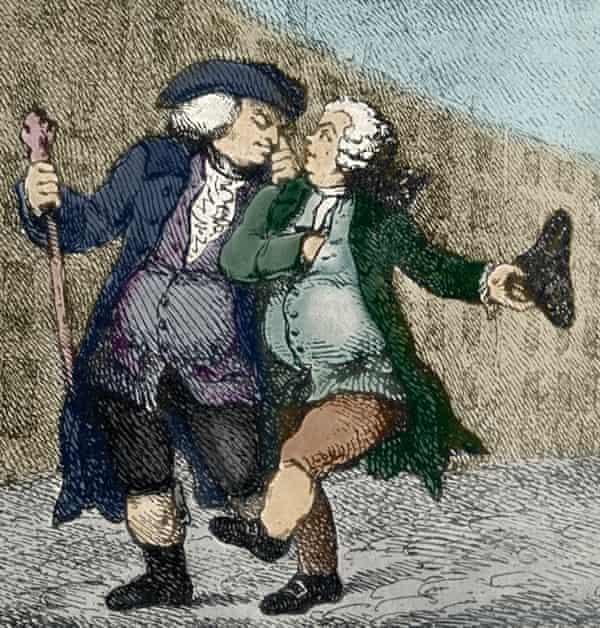Enid Blyton, Isle of Purbeck, Dorset
Enid Blyton took her holidays on the Isle of Purbeck (not in fact an island, but a chunky peninsula, with cliff-top walks, moors, hidden coves, a steam train, ruined castle and a lingering air of adventure). She came up with the idea for The Famous Five when staying at the Ship Inn in Swanage in 1942, so that’s as good a place as any to set off for a bracing walk in the company of the hyperactive Enid.
Head south, then west along the coastal path, past the lifeboat station, perhaps with one of her evocative nature books in hand, with the waves slapping in the caves to your left, along banks of blackthorn, gorse and teasels, with larks in the air. You could take a dip at Dancing Ledge: dynamited to create a swimming pool by a local headteacher in more anarchic times, it appears in the Malory Towers books. And then cut north to the unimprovable Square & Compass pub at Worth Matravers, before reaching Corfe and its jackdaw-infested castle, inspiration for the Famous Five’s Kirrin Castle. It’s time to raise a glass of ginger beer in honour of Enid, whose dubious vision of cheery bobbies and suspicious outsiders retains a suffocating resonance. Toot toot! The steam train’s waiting to take us back to Swanage.
JB Priestley, Wharfedale, Yorkshire Dales

How long you make this walk is up to you. Jack Priestley wrote that in his youth there were Bradford folk who’d think nothing of tramping 30 or 40 miles every Sunday; and when he returned to the city in 1932 (he’d left to join the army in 1914, aged 19, and got stuck in the south), he walked from Ilkley to Hubberholme before lunch. Or so he implies in his peerless travel book, English Journey. But that’s 25 miles, along the banks of the Wharfe, and he says he rolled into the George Inn (“soup, yorkshire pudding, roast chicken and sausages, two veg, pudding, cheese … all for two and sixpence each”) before taking the long route home via Blubberhouses. He was probably driving.
Anyway, I would start nine miles away at Kettlewell, or even the Buck Inn at Buckden a couple of miles away (“a notable goal for Bradfordians, who have emptied the barrels at the inn there many a time”), before following jolly Jack and the Wharfe to Hubberholme. The George is still there and Jack’s ashes are buried outside the little Norman church. You can sense somehow he’s still relishing the land, its lark song and the eternal bloom of the ling. “With you, have I not fleeted the time carelessly, as they did in the golden world?”
Ithell Colquhoun, Mousehole to Lamorna, Cornwall

When the artist and writer Ithell Colquhoun (try: Eyethull Kerhoon) wanted to escape London and a disastrous marriage to an Italian surrealist, she came to Lamorna Cove on the south Cornish coast. She had visited the area once before, during the second world war, staying in Mousehole, and that’s where this walk starts, joining the South West Coast Path on the outskirts of the still magical fishing- and second-home village. The path enters one of its wilder stretches here, dipping through scrubby woodland, scrambling close to the ragged cliffs, the salty Cornish air breezing in from an iridescent Cornish sea.
Lamorna Cove is a rocky jumble of deserted quarries, a quay and a car park, and a handful of grey cottages, but inland is the damp river valley where Ithell lived in a tin shack, overhung with dripping trees, infused with “streams and moon-leaves, wet scents and all that cries with the owl’s voice …” as she put it in her visionary book The Living Stones. The shack’s still here, but spruced up. Further up the valley there’s a soothing pub, the Lamorna Wink. And afterwards, follow footpaths over fields to the Merry Maidens, the standing stones that Ithell painted in Landscape with Antiquities. Maybe stay awhile in the moonlight and bear witness, with Ithell, to the shifting of the “landscape-veil”.
Edith Somerville and Violet Martin, Snowdon

We should have a mountain to climb, and who better to follow than Edith Somerville and Violet Martin (who wrote under the pseudonym Martin Ross), the creators of the Irish RM stories, who scaled Snowdon in 1893 when researching their travel book Beggars on Horseback and didn’t, in fact, like mountains at all. After shivering through the night on the summit (there was a shack calling itself a hotel in those days), they pronounced that mountains were best viewed en profile and that “a beautiful view is not a mere matter of miles seen from a great height”.
They started from Rhyd Ddu, which now has a car park next to a one-track railway station, and walked at their ease across grassy fields (dressed in Victorian long skirts and wide hats), before following their unforgiving guide, Griffith Roberts, up the misty slopes, scrambling along scree and through shallow streams, over rocks and boulders, and on to the horseshoe cliff-top that curves around to the summit. Edith at this moment had “an almost uncontrollable desire to traverse it after the manner of a serpent”. Swallow your vertigo and you’ll be rewarded with a vast panorama over Wales and England. Or a fog. The hotel-shack is now an Alpine visitor centre and cafe, and there’s a train (inaugurated three years after Somerville and Ross’s ascent) to take you back down. But really, you’ve done the hard part.
Samuel Johnson and James Boswell, Urquhart Bay Woods, Loch Ness

In 1773 James Boswell finally managed to persuade his friend Samuel Johnson to accompany him on a tour of the Highlands and Western Isles (he’d been trying for years), and the garrulous couple spent three months travelling from Edinburgh to Skye and back. They both wrote books: Boswell’s is gossipy and preoccupied with his friend’s temper; Johnson is magisterial, fulminating ambivalently on the effects of English colonialism (Culloden was in 1746), and surprisingly agitated about how few trees they were seeing (“a tree might be a show in Scotland as a horse in Venice”).
This is changing, we hope (head north to Glen Affric to see the rewilding work of Trees for Life), but the bickering duo would have ridden through the ancient wet woodland of Urquhart Bay, on the upper banks of Loch Ness, now managed by the Woodland Trust, and there are still trees in abundance here. The woods are bounded by the rivers Coiltie and Enrick, and they can flood in wet weather, and it is a scramble to get to the shores of the loch, but they are still a joyful example of low-lying birch, alder and willow woodland, crisscrossed by loamy footpaths and seemingly remote for much of the year. Urquhart Castle is close, for tea and shortcake.
Peter Fiennes is the author of Footnotes: A Journey Round Britain in the Company of Great Writers (Oneworld Publications), available for £9.56 at the Guardian bookshop





